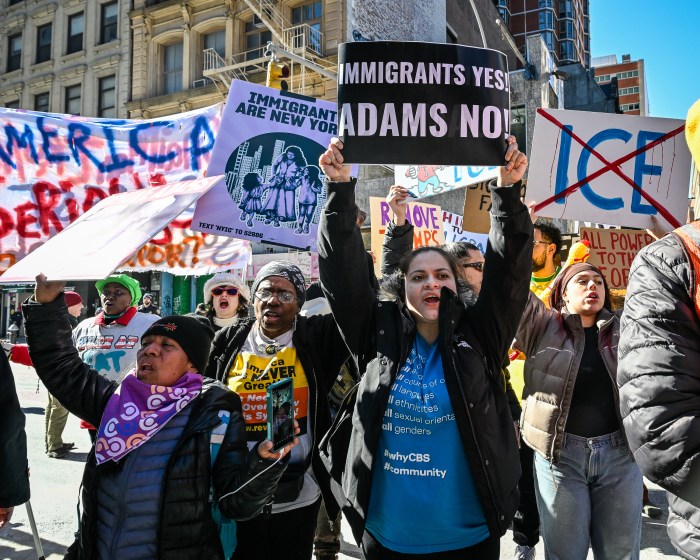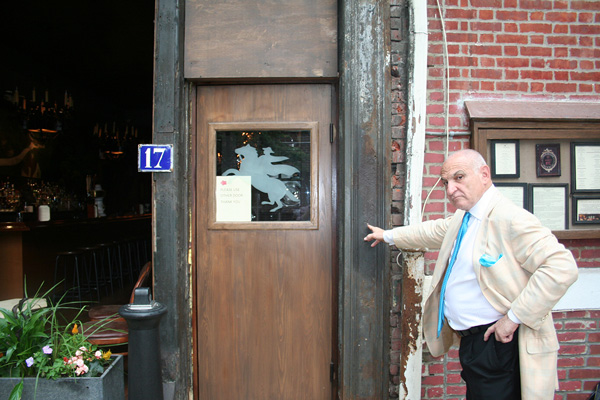
BY YANNIC RACK | Village residents were concerned and outraged this past week about the removal of a historic facade on Barrow St. But the restaurant owners responsible for it remained unapologetic.
The owners of One if by Land, Two if by Sea, the restaurant that has occupied 17 Barrow St. since 1973, removed the white plaster archway framing its entrance last Thurs., July 2, but quickly faced a backlash from local residents. In addition, the Landmarks Preservation Commission slapped them with a violation.
After residents complained to the commission, the restaurant’s owners were served with a warning letter on the same day because the work was being done without a proper permit.
“This is awful. We reached out to the L.P.C. as soon as we became aware of this,” said Andrew Berman, executive director of the Greenwich Village Society for Historic Preservation.
“It’s an iconic and beloved piece of the West Village,” he said. “There was absolutely no reason to rip it down, and we’re going to make sure that this is pursued.”
The building, which dates to 1834 according to tax records, is landmarked as part of the Greenwich Village Historic District.
The restaurant’s Web site claims it was once used as a carriage house by Aaron Burr, the former U.S. attorney general and vice president under Thomas Jefferson who infamously killed Alexander Hamilton in a duel.
Burr, however, is not listed on title records as an owner and died only two years after the building was constructed.
Nonetheless, area residents were shocked when they discovered the changes over the holiday weekend. Rich Schwarzkopf, who has lived across the street for 13 years, noticed the radically new look on Saturday morning.
“I’ve always been interested in the history of this area and the buildings around it, and of course One if by Land was this iconic restaurant and Village place to hang out,” he said.
“Over the years it evolved into this beautiful restaurant. It was gorgeous with all of that beautiful plasterwork around the doors. Just to go out over the weekend, it was like, ‘Oh God, what happened here?’ All the neighbors were talking, and we hope that they plan to replace it.
“Of all places in New York City, Greenwich Village is like walking on a landmine if you do those kind of things,” he added.
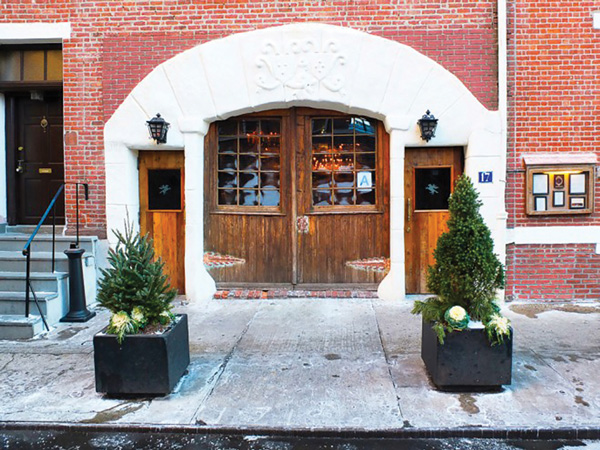
But the restaurant’s owners paint a different picture altogether. According to David Ghatanfard, who took over the restaurant in February together with a partner, Zef Deljevic, the facade partly collapsed because of extensive water damage over the years and had to be removed as a safety precaution.
He spoke with The Villager on Tuesday while standing in front of the restaurant and pointing at crumbling bricks and wooden beams.
“A piece of the arch came down and then we found out that all this wood [underneath] is rotten,” Ghatanfard said. “Instead of it being a hazard of completely coming down, and someone getting hurt, we brought the rest down.”
Ghatanfard also pointed out that the steel beams on the far sides of the entrance — which came to light once the stucco was removed — in fact represent the building’s original exterior.
“The steel is staying the same color it is, we’re going to fix it,” he said. “The wood we’re going to put steel over to bring the original look back to the neighborhood. The rest is all staying the same it is,” he said, adding that all of this would be done with the proper permits.
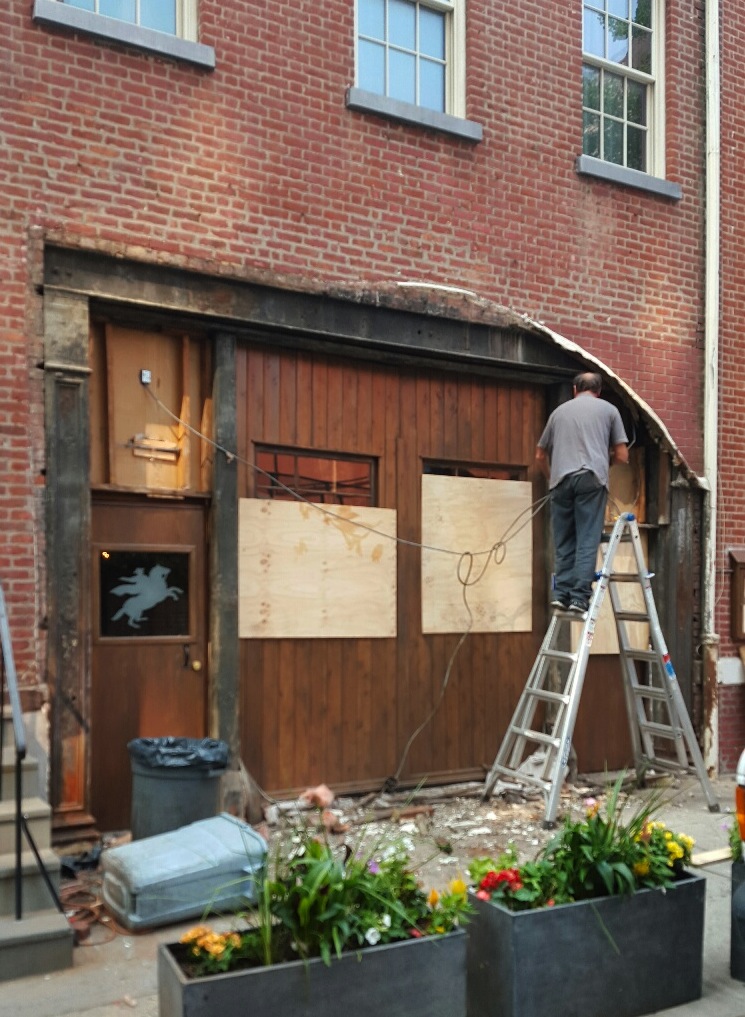
“It was cheap stucco,” Tony Elezovic, the restaurant’s general manager, chimed in. “As I see it, the preservation society, which is mostly doing a good job, they should really be happy with what we’re doing. We’re bringing the original back.”
The building’s owners, who operated the restaurant before it was sold earlier this year and still live above it, were away on vacation when the facade came down.
Speaking on Wednesday from Spain, Colleen and Oscar Goujane confirmed that the changes had been made without their permission, but said that they would try to resolve the issue with the restaurant owners.
“We love our neighborhood and respect our neighbors,” Colleen Goujane said. “We contacted the tenants and they claim that the white molding was rotting inside and that they had to remove it. My husband brought to their attention that any repairs they wish to do had to go through the Landmark Commission. Our attorney sent them a formal letter warning them in the strongest terms that they had to comply with the Landmark Commission’s protocol.
“We are back on July 17 and at this time we will meet with the new owners to rectify the many problems that people are complaining about,” she added.
Also on Wednesday, the contractor who oversaw the work said that the facade actually collapsed while the wooden frames around the doors were being replaced.
Marko Djeljaj, who is the brother of Zef Deljevic, the restaurant’s other owner, said that one of his workers had to jump out of the way in order to avoid being hit by the falling debris. He complained that residents were unfair in blaming him for simply doing his job.
“I have people come and scream at me. We have to open for business,” he said. “People don’t know it, but it’s $50,000 per month here.”
He also claimed the stucco facade was only added in the late Sixties, according to the son of a previous owner who bought the building in 1968. The Greenwich Village Historic District was designated one year later, in 1969.
“Some people think this has been here for 300 years. It’s not true,” Djeljaj said.
Nonetheless, Berman of G.V.S.H.P. suspects the exterior is, in fact, older than that and dates back to the 1920s.
“Even if it was added yesterday, as long as it was legally added, it is illegal to change it without a permit,” he said. “And there doesn’t appear to be any evidence that this was done the legal way.”
He also added that historic changes that have been made to a building are an important part of its history and should therefore be kept intact.
“At a glance, this archway looks like it’s probably part of a significant period of the Village’s evolution — the 1920s and 1930s,” he said.
On Thursday, Berman sent The Villager a 1940 tax photo that shows that the arch over the doors was in place at that time.
“This means that at the very least it dates from the interwar era, as we suggested, if not possibly even earlier,” he said of the arch. “I think it also calls into question the truthfulness of a lot of the claims of the new restaurant owners who removed it.”
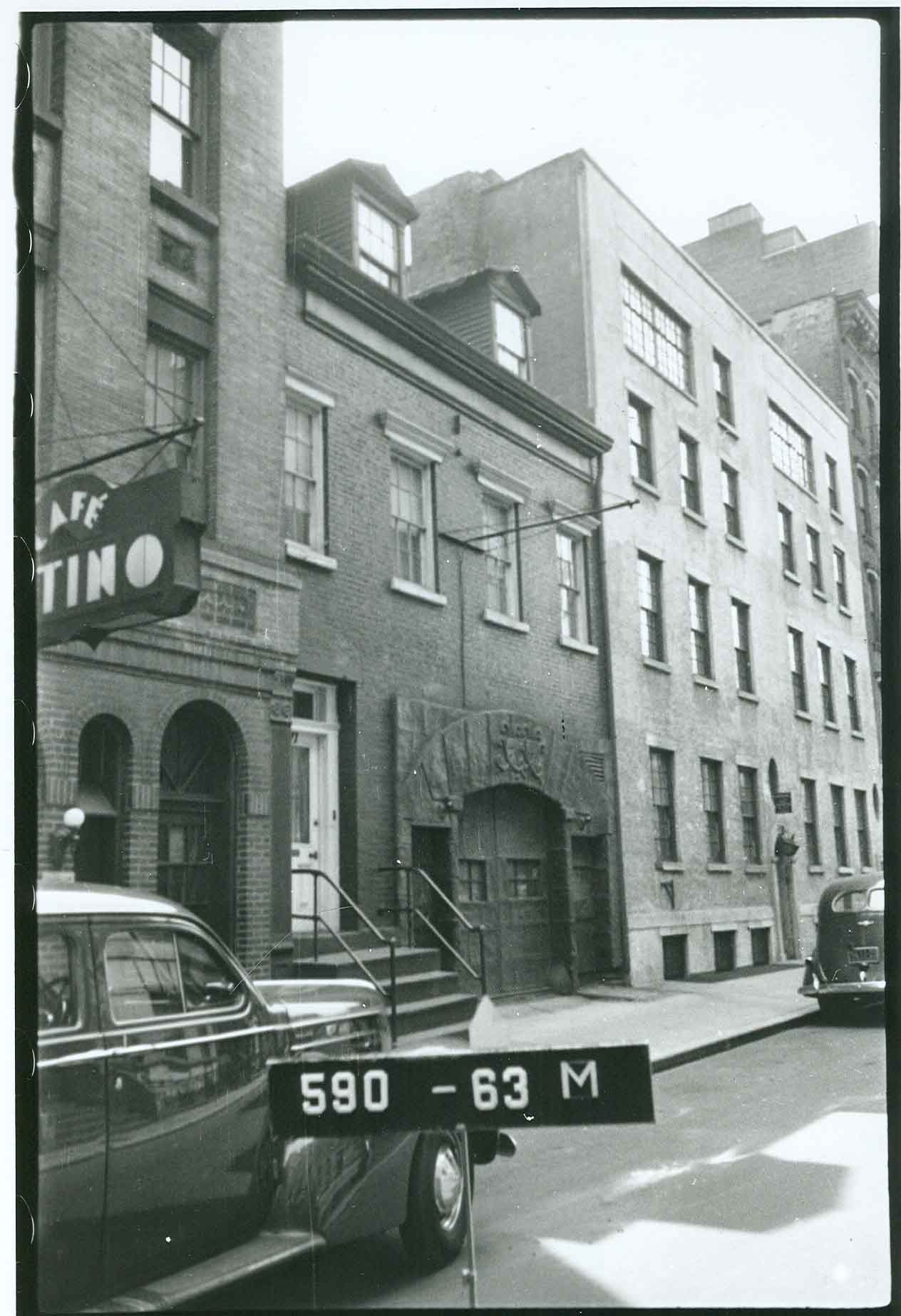
According to a spokesperson for L.P.C., the property’s owners have contacted the commission and will be filing an application to correct the violation, which they can do within 20 days.
Whether they will be told to restore the facade, pay a fine (possibly as high as $5,000), or will be granted a permit after all, is still up in the air.
Building owners Oscar and Colleen Goujane said that they want to see the white molding restored but are worried L.P.C. might not allow it since it was “grandfathered in.”
For Berman, however, there is only one proper outcome.
“It is hard to imagine that anything other than restoring those very distinctive features is what would be appropriate and acceptable for this site,” he said.




